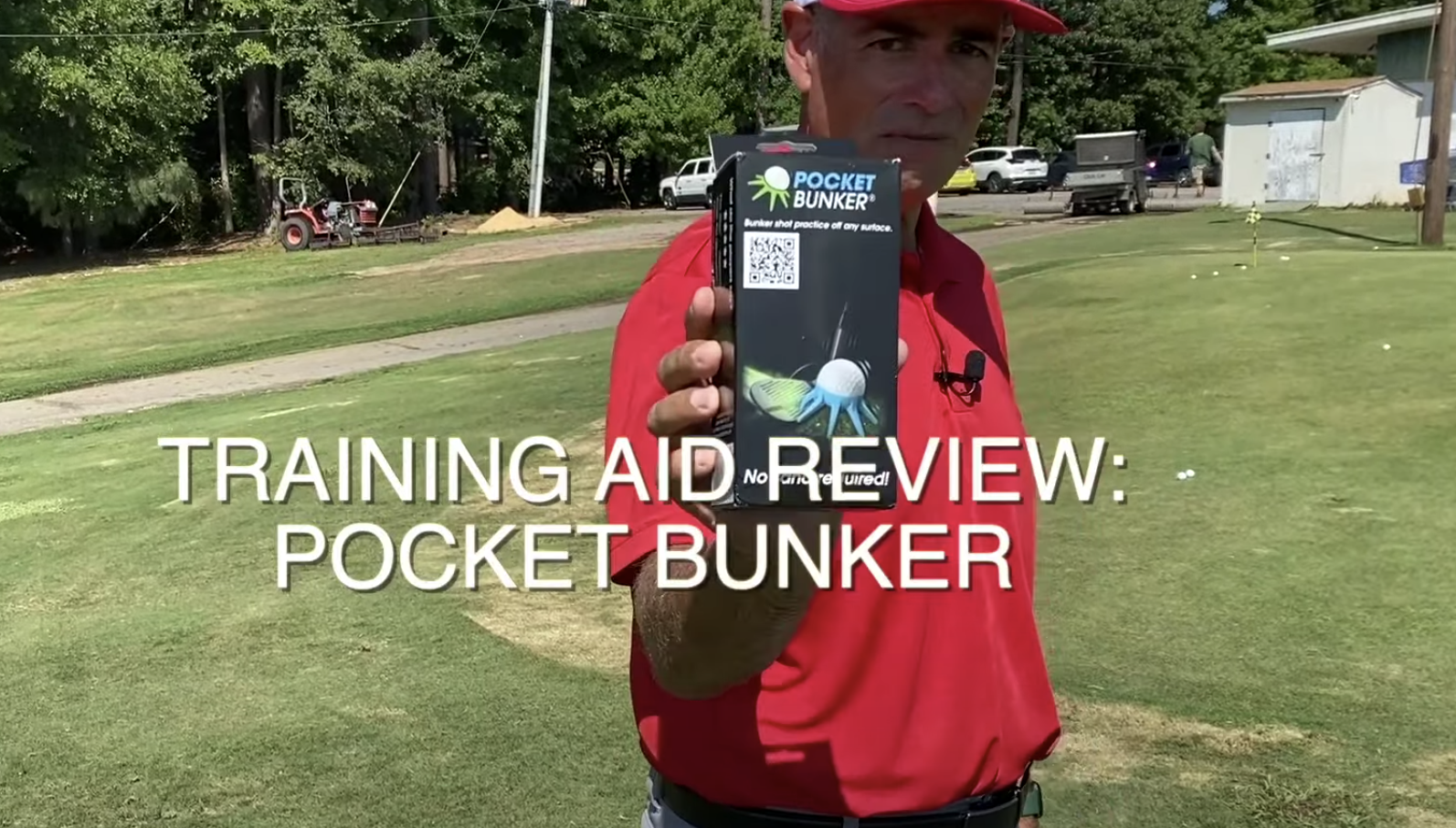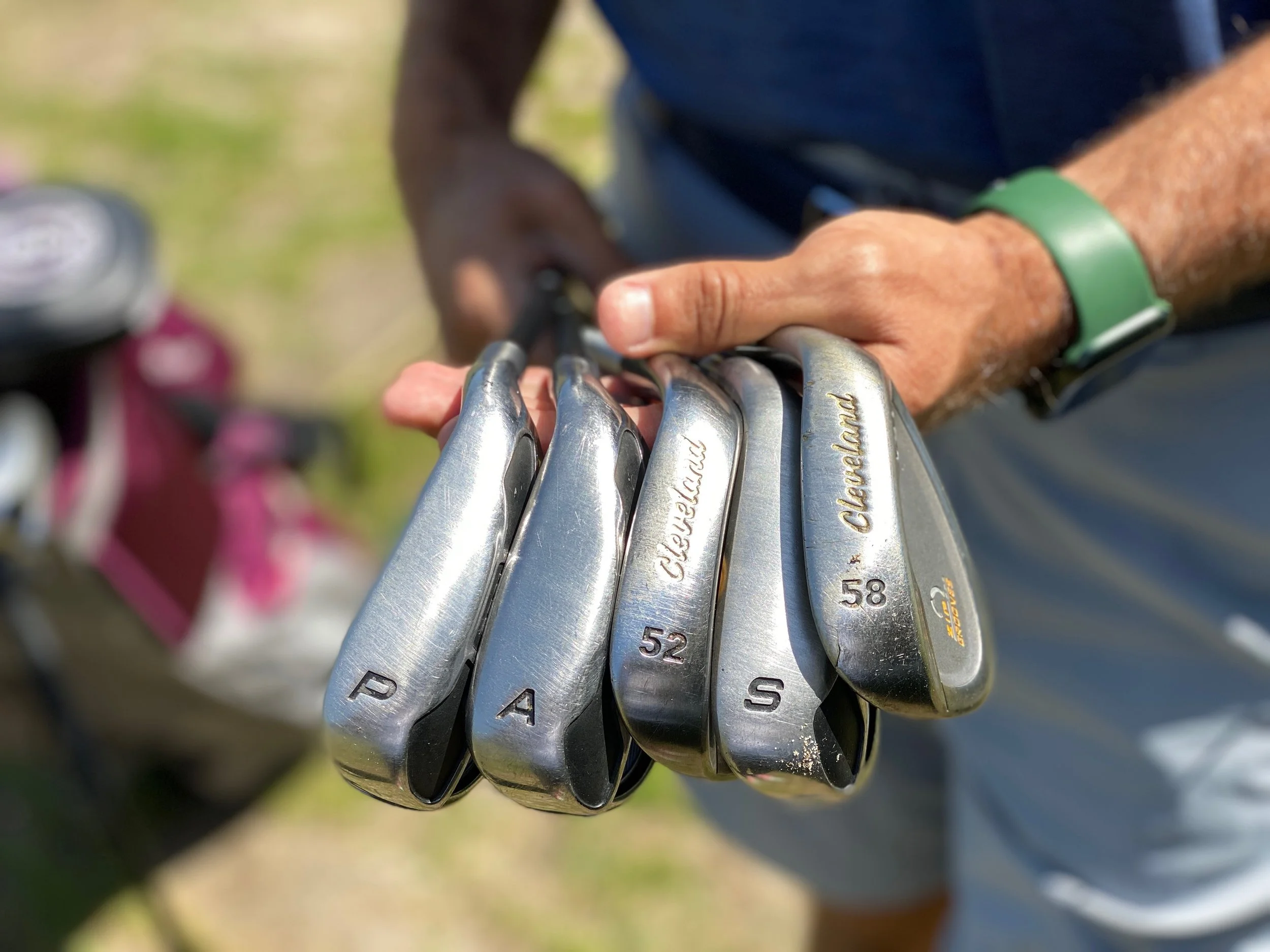I have been teaching golf for over 25 years and my golf instruction business in Raleigh has been in operation for over 12 years. It’s always interesting having junior golfers in class because sometimes they ask some really great questions and these questions lead to some interesting conversations.
In this morning’s junior golf class, I asked the kids, “What is the number one problem that most golfers have?”
The answer is: most golfers are playing golf with a chronically open club face. And I want to make this post really short and really simple in an effort to help most golfers with their biggest problem.
In this drill, I am using a really cool tool called the pitch assist. It’s magnetic and it attaches to your club face. You won’t actually use this tool while trying to hit a ball but it’s a really cool device that shows you where your club face is pointing. When I set up with an open club face, you can see where the club face is pointing as I take the club back and as I come through my down swing.
If my club face is open, I am going to have to make some compensations to get that club face square when it gets to the ball. Sometimes this is becoming super handsy and sometimes you have to alter your swing plane direction which results in a dramatic out to in swing path. Regardless of what kind of compensation you make to square the club face, it’s not going to be very efficient if you aren’t keeping the club face square to the arc of your swing throughout the swing.
So how do you get a handle on this issue?
First of all, let’s talk about what we want. We want to keep our club face relatively square to the arc of our swing. This is not going to be perfect or exact but we want to see the club face stay relatively square to the arc. So when I take my backswing, you can see that my club face is roughly the same angle as my spine when the club is parallel to the ground.
So the drill will be to take the club back to where it’s parallel to the ground and parallel to the target line. Take a look at your club face. It should match the angle of your spine in that position. Then practice swing through the shot. Then pull over a ball and do this same drill and actually try to hit a shot. At first, you want to start with smaller shots. This should be no more than 50% of your normal shot. In other words, half speed. It’s always easier to feel the club face when you practice at a slower speed or a smaller swing.
Remember, if you can get a handle on your club face, you can get a handle on your golf game. I hope that helped. Leave questions in the comments section.



































